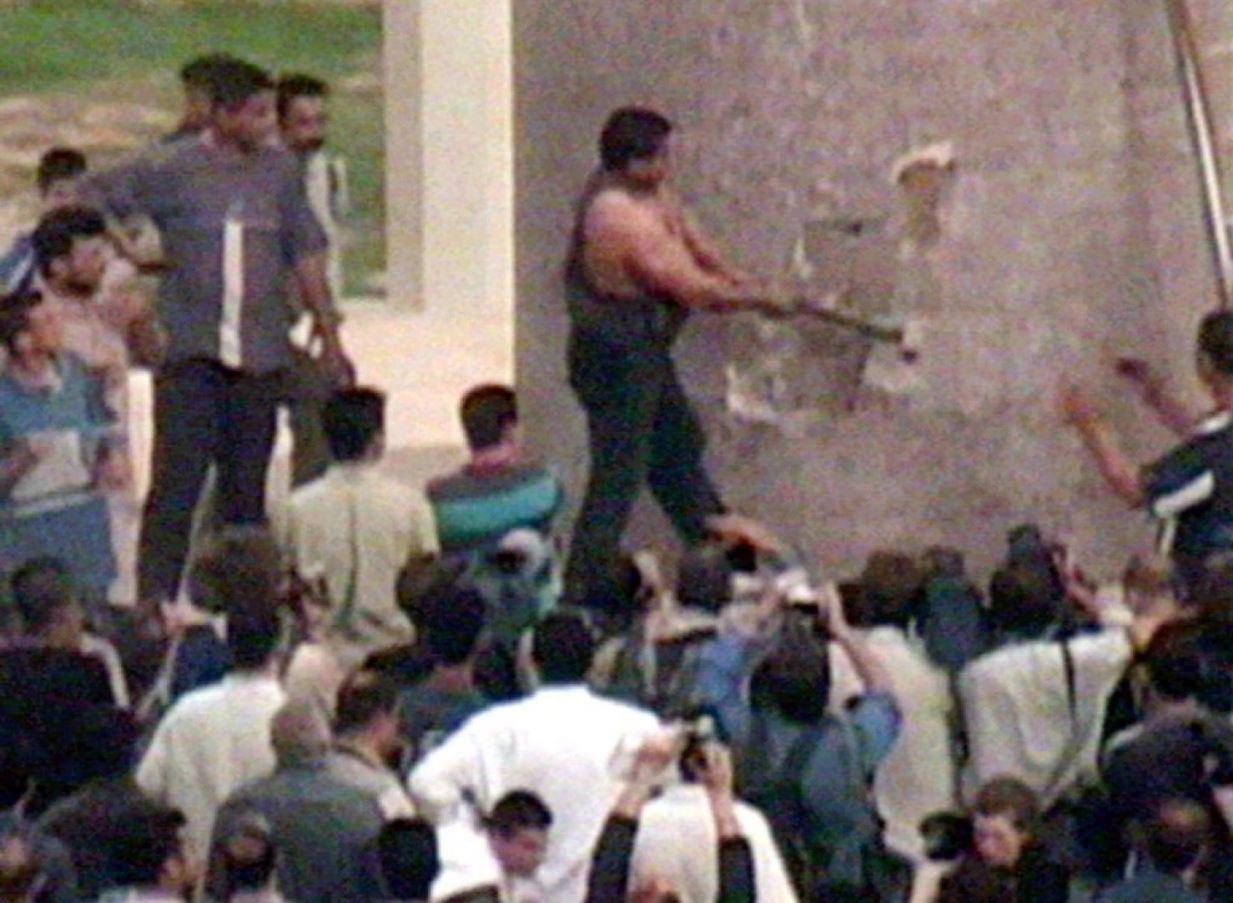The Iraqi man who helped destroy Saddam Hussein’s statue with a sledgehammer now wants him back
'Saddam is gone, but in his place there are 1,000 Saddams'

It is an image seared in the minds of war-ready and war-weary Americans alike. Just weeks after the invasion of Iraq, American armored vehicles bore down on Firdos Square in downtown Baghdad, where an emboldened man had already taken a sledgehammer to the base of a statue of Saddam Hussein.
That man, Kadhim Sharif al-Jabouri, had once repaired the Hussein family's motorcycles, but was also imprisoned by Hussein after falling out of favor. He says that 14 or 15 members of his family were executed by Hussein's regime.
Follow our latest updates on the Chilcot report
In an interview aired Tuesday by the BBC, more than 13 years after the invasion, Jabouri speaks of his longing for the relative peace of the years before it.
“Now, when I go by that statue, I feel pain and shame. I ask myself, why did I topple that statue?” said Jabouri. The toppling of the statue became the iconic image of the beginning of the invasion. It conveyed hope — although many have since alleged that the whole scene was more or less staged.
“I'd like to put it back up. To rebuild it. But I'm afraid I'd be killed,” said Jabouri.

Iraq is yet to fully emerge from the bloodbath the invasion precipitated. And early Sunday morning, Isis terrorised Baghdad once again with the deadliest single bombing since the year the invasion began: 2003. More than 200 were killed as they shopped for gifts for the upcoming Eid holiday, marking the end of the holy month of Ramadan. Witnesses said many of the dead were trapped in the inferno of a shopping mall, their bodies melted.
The shopping mall was in Karrada, a neighborhood just down the road from Firdos Square, where the statue Hussein had built for himself for his 65th birthday once stood.
Isis still controls large portions of northern Iraq, although they have been beaten back lately by Iraqi forces, most notably in the city of Fallujah. Both Isis, as well as the American invasion and subsequent American-backed Shiite-led governments, have exacerbated sectarian divisions. Before Sunday's bombing, there had already been seven that killed more than 30 people since the beginning of 2016. Prospects for peace in the near future are dim.
Jabouri has long since left Baghdad, which he found to be too unsafe for his family. He now lives in Beirut, along with more than 1 million refugees from Iraq, Syria and Palestine, who have added incredible stress to Lebanon's public infrastructure and services. Once a weightlifter and wrestler, he now continues with the hobby that brought him into contact with the Hussein family in the first place: motorcycle repair.
He, like many interviewed in my colleague Loveday Morris's reporting, blames the current situation squarely on the Iraqi government. After the American invasion, he says, things got worse every year. “There was corruption, infighting, killing, looting. Saddam killed people, but it was nothing like this current government,” he said. “Saddam is gone, but in his place there are 1,000 Saddams.”
And that government was instituted by the invading coalition. For them, Jabouri had these words: “Bush and Blair are liars. They destroyed Iraq and took us back to zero, and took us back to the Middle Ages or earlier. If I was a criminal, I would kill them with my bare hands.”
Copyright: Washington Post
Join our commenting forum
Join thought-provoking conversations, follow other Independent readers and see their replies
Comments